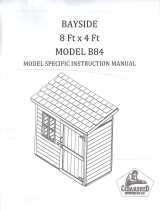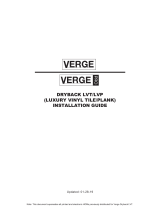
OBSERVATORY BASE REQUIREMENTS
For best results your observatory should be bolted to a concrete hard standing. This can be prepared by
yourself or you can employ a local builder / tradesman to do the work for you.
We always recommend using one of our Astro Engineering steel piers for
mounting your telescope. This will not only give you a rock solid permanent
alignment for your telescope mount, but also will allow you to dispense with
the tripod, which takes up valuable floor space, and prevents you from
accidentally kicking one of the legs!
Your concrete base will need a substantial central block of concrete to take
the weight of your telescope setup, and provide a really solid footing.
This block needs to be 1000mm x 1000mm square, with a minimum depth of
600mm, and in an ideal situation it can be isolated from the surrounding
floor, but at the same height level.
Alternatively, the block can be cast with the surrounding floor at the same
time – see pictures below.
The dimensions and specifications for concrete hard standing base are as follows:
2.2M OBSERVATORY – 2400mm square or circular.
2.7M OBSERVATORY – 3000mm square or circular.
The base is best raised above ground level by at least 50mm to assist drainage, and needs to be as flat and
level as possible to ensure good dome performance. Also, as stated above, can be square or circular in
shape.
Obviously, the square base is easier to produce, using straight lengths of timber shuttering.
The overall depth of the base should be a minimum depth of 150mm.
PDF Created with deskPDF PDF Writer - Trial :: http://www.docudesk.com

• BUYING CONCRETE
Concrete is bought by metric volume. To calculate the required amount, simply multiply length in metres by width
in metres by depth in metres to calculate a volume in cubic metres. Ready mixed concrete companies usually
deliver in multiples of half-cubic metres, so "round-up" your calculated quantity accordingly. There is often an
excess haulage charge on part-loads, so check with the supplier.
The concrete should be reasonably wet to make handling and leveling as easy as possible. Use at least strength
C20 mixture (20N/mm² cured strength after 28 days) with a 50mm slump (a measure of 'sloppiness'). This is
roughly equivalent to the old 4:2:1 mix. The ready mixed concrete supplier will understand these references, and
the delivery wagon usually carries extra water that can be mixed into the concrete before pouring, if the mixture is
too stiff. However, bear in mind that adding further water to the prepared mix can affect the cured strength of the
finished concrete and may invalidate the strength guarantee of the supplier, leaving the contractor responsible for
any remedial work.
•
SOURCES
There are two sources of ready mixed concrete. Firstly, the national
concrete companies with local depots that deliver and discharge, these
companies will supply a given quantity of concrete of guaranteed
strength, and leave you to do the hard work. They will deliver any
quantity you require, from 1 m³ upwards, in multiples of half cubic
metres. Many will offer free, technical advice - look in Yellow Pages for
local companies.
Note that ready-mixed concrete is sold by volume (m³) and not by weight. The concrete wagons usually
carry 6m³, or sometimes 8m³, and you may be charged £15-£20 for each cubic metre not carried.
There are also 'mix and move' contractors, who mix the quantity of concrete you require on their specially
adapted wagons, and then barrow, or pump, the concrete to exactly where you require it. This concrete may
not meet the quality standards required of the larger national contractors, but it is usually adequate for
domestic use. Expect to pay more per m³ than the delivered ready-mix, but then, they are doing a lot of the
hard work for you! These contractors can also be found in Yellow Pages or the Thomson Local.
• WORKING THE CONCRETE
A shovel or a strong rake is used to roughly level out the wet
concrete, and then a straight-edged timber can be used to tamp down
the concrete to the correct level. Tamping helps eliminate air pockets
being trapped in the body of the concrete and also helps to push the
hard aggregate into the concrete, bringing sufficient of the matrix to
the surface to make smoothing (floating) easier.
Tamper made from straight-edge timber
PDF Created with deskPDF PDF Writer - Trial :: http://www.docudesk.com

• FINISHING THE CONCRETE
A reasonably smooth surface can be obtained by repeatedly tamping wet concrete, but for a finer finish, the
surface should be smoothed using a steel float trowel. This is best done when the concrete has started to stiffen as
part of the hardening process, as the float trowel leaves fewer trowel marks. Hand floats, also known as Bull
Floats, are fine for small areas where a near-perfect finish is not essential.
Judging exactly when to commence floating, either with hand tools or with a power float, is an art in itself, and is
gauged from years of experience; too soon and the trowel marks will never disappear, too late and the concrete
might not 'rub-up' to a close finish.
• TIMBER SHUTTERING
The picture here shows an example of the timber shuttering in place, showing the hole for the pier block.
The shuttering should be checked for being square and level. In this example, ready mixed concrete was
poured into the pier hole first, and then levelled off, being pouring the remaining concrete into the base.
• ELECTRICAL SUPPLY
If you wish to run power into the observatory, it may be an idea to run a conduit into the base to allow
cables to be pulled through. A simple calculation will give you the position where the conduit needs to lay in
the concrete (see above pictures). We recommend a power socket be mounted to the inside of the observatory
wall. This should be done a qualified electrician. Also, you may need to run additional cables for PC
networking, etc. Another conduit from the main feed to the pier area may also be useful.
• ADDITIONAL NOTES
As an alternative, you can attach your observatory to a wooden decking base, but you will still require the
central concrete block to provide the stability for your telescope set up.
Your concrete base will be almost fully cured around a month after laying, however, after 1 week; the base
will be strong enough to allow observatory installation, and drilling to take place.
We recommend purchasing one of our high quality impact resistant interlocking
rubber tiled flooring systems. The tiles, in conjunction with the supplied plastic
membrane, provide a flooring surface that is not only waterproof, but also shock
resistant, protects falling eyepieces etc! Also reduces noise and vibration, and
provides good insulation from the concrete.
FOR TECHNICAL SUPPORT CALL +44(0) 1353 886128
PDF Created with deskPDF PDF Writer - Trial :: http://www.docudesk.com
-
 1
1
-
 2
2
-
 3
3
Pulsar 4900510 Owner's manual
- Type
- Owner's manual
Ask a question and I''ll find the answer in the document
Finding information in a document is now easier with AI
Related papers
Other documents
-
Bon Tool 32-148 Installation guide
-
Hasbro Batman Micro Mr.Freeze Observatory Operating instructions
-
 Cedarshed B84 Installation guide
Cedarshed B84 Installation guide
-
Quikrete 110190 Installation guide
-
 Verge D327515 Installation guide
Verge D327515 Installation guide
-
 Centricity Home Owner's manual
Centricity Home Owner's manual
-
Quikrete 100700 Installation guide
-
Detecto ARMOR Digital Truck Scale Installation guide
-
FMI Outdoor Fireplace MM39/44/49VF User manual
-
TrafficMASTER DH83300941 Installation guide





